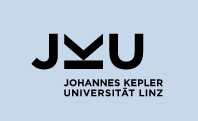Symbolic Linear Algebra (326.080)
Summer semester 2023
Carsten Schneider
Carsten.Schneider@risc.jku.at
Lecture:
Time: Tuesdays, 10:15 - 11:45
Rooms:
| | for March 7: | |
K 009D |
| | for March 14: | |
K 153C |
| | for March 21,28: | |
S2 044 |
| | for April 18: | |
K 001A |
| | for April 25: | |
S2 044 |
| | for May 2: | |
K 153C |
| | for May 9: | |
S2 044 |
| | for May 16: | |
K 153C |
| | for May 23: | |
K 269D |
| | for June 6, 13: | |
HF 9905 |
| | for June 20: | |
K 001A |
| | for June 27: | |
K 001A |
In many applications of symbolic computation (e.g., summation, integration,
solving difference/differential equations) one has to solve
systems of linear equations that are not defined over floating-point
numbers, but for instance over rational function fields or over principle
ideal domains. In this lecture we discuss how one can generalize
and/or optimize the well-known linear algebra methods in order to
solve such systems. The application of these methods are illustrated
by various examples.
In the first part of the lecture we revisit the theory of linear algebra in a
more general setting: We
do not work over fields but general rings. In this way the underlying structures of vector spaces generalize to modules.
Here we require more and more ring
properties (general rings with 1, commutative rings -> noetherian rings -> principle ideal rings -> principle ideal domains -> Euclidean domains -> fields)
and can derive more and more intersting (algorithmic) results of the corresponding modules.
In particular, we will derive the Smith normal form and illustrate it by various
examples (including, e.g., the cyclic decomposition of finitely generated groups).
The second part of the lecture deals with advanced computer algebra methods to solve linear systems over a computable field.
Among them we will focus on black box linear algebra. Here one gains speed ups
in linear system solving provided that one can carry out matrix
multiplications efficiently.
Some slides of the lecture are collected in the following file: SymbLA.pdf
The exercises appearing within the lecture are also collected in the following file: Exercises.pdf

